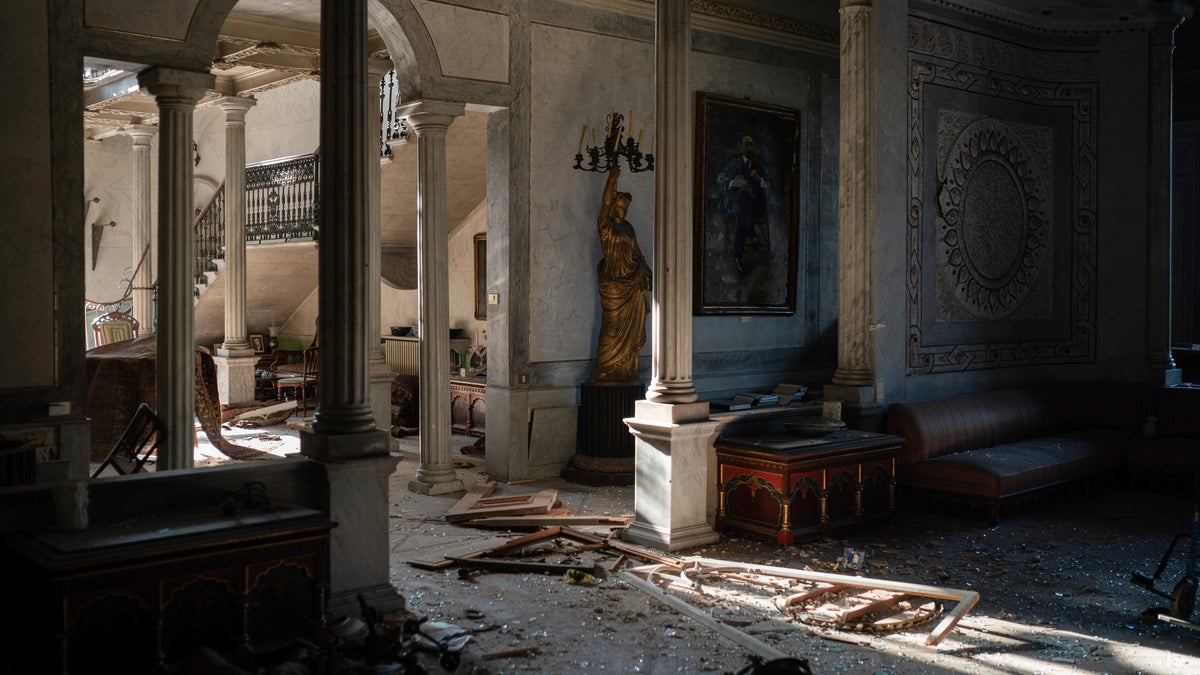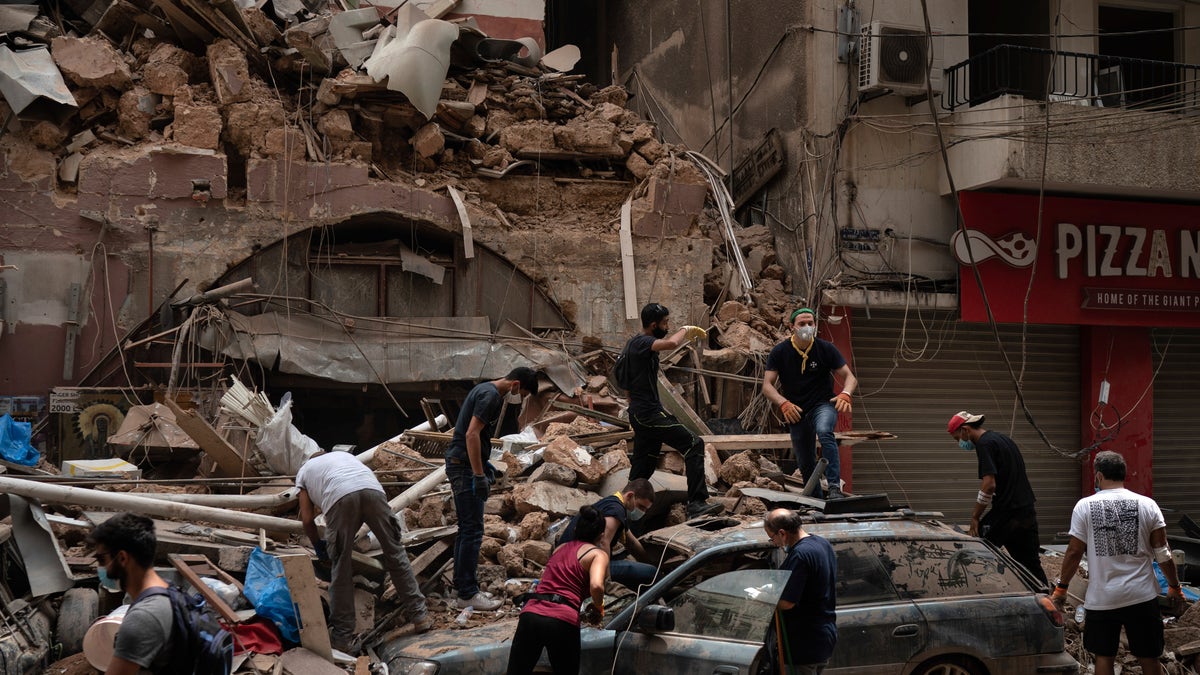Growing uncertainty over future of Lebanon after government resigns following deadly blast
Trey Yingst reports from Beirut on the fallout from the deadly explosion.
The United Nations’ cultural agency said Thursday it will lead the campaign for the recovery and restoration of Beirut's heritage, citing reports that 60 historic buildings in the Lebanese capital were at risk of collapse following last week’s explosion.
On Aug. 4, about 2,750 tons of ammonium nitrate stored at Beirut’s port blew up, obliterating the city’s main commercial hub. The blast, the most destructive in Lebanon’s troubled history, killed more than 170 people, wounded more than 6,000 and caused damage worth between $10 and $15 billion.
Among the damaged structures were museums, historic buildings, art galleries and religious sites in Beirut.

Broken glass and window frames lay on the floor of the Sursock Palace, heavily damaged after the explosion in the seaport of Beirut, Lebanon, on Aug. 7. (AP)
US OFFICIAL SAYS FBI WILL JOIN BEIRUT INVESTIGATION
The most affected areas in the capital were Gemayzeh and Mar Mikhael, which face the port and were known for their active nightlife, with many old buildings turned into pubs or restaurants. Those streets were strewn with debris from buildings and blanketed by broken glass in the wake of the explosion.
“The international community has sent a strong signal of support to Lebanon following this tragedy,” said Ernesto Ottone R., assistant UNESCO director-general for culture. “UNESCO is committed to leading the response in the field of culture, which must form a key part of wider reconstruction and recovery efforts.”
UNESCO’s statement quoted Sarkis Khoury, director-general of antiquities at the Ministry of Culture in Lebanon, who cited at least 8,000 buildings, many concentrated in Gemayzeh and Mar Mikhael. Among them, there are about 640 historic buildings, about 60 of which are at risk of collapse, he said.

People remove debris from a house damaged by Tuesday's explosion in the seaport of Beirut, Lebanon, on Aug. 7. (AP)
MACRON WARNS IRAN NOT TO 'INTERFERE' IN LEBANESE GOVERNMENT SHAKEUP
Also affected was Beirut’s eastern neighborhood of Achrafieh where the landmark Sursock Museum is located, as well as other neighborhoods with the National Museum and the Archaeological Museum of the American University of Beirut, UNESCO said.
There have been concerns for years in Lebanon about historic buildings being sold, then demolished and replaced by high-rises. Recent reports cited middlemen who contact owners of damaged historic buildings and offer high prices to buy their property.
CLICK HERE TO GET THE FOX NEWS APP
Caretaker Finance Minister Ghazi Wazni issued a decree Wednesday preventing the sale of any historic building without permission from the ministry of culture. The Finance Ministry said in a statement that the move aims to prevent any “exploitation.”
Caretaker Minister of Culture Abbas Murtada said Thursday his ministry is working to prevent any exploitation by some businessmen, adding that the restoration of the damaged historic buildings is estimated around $300 million. He added that teams from his ministry plan to renovate the buildings.

